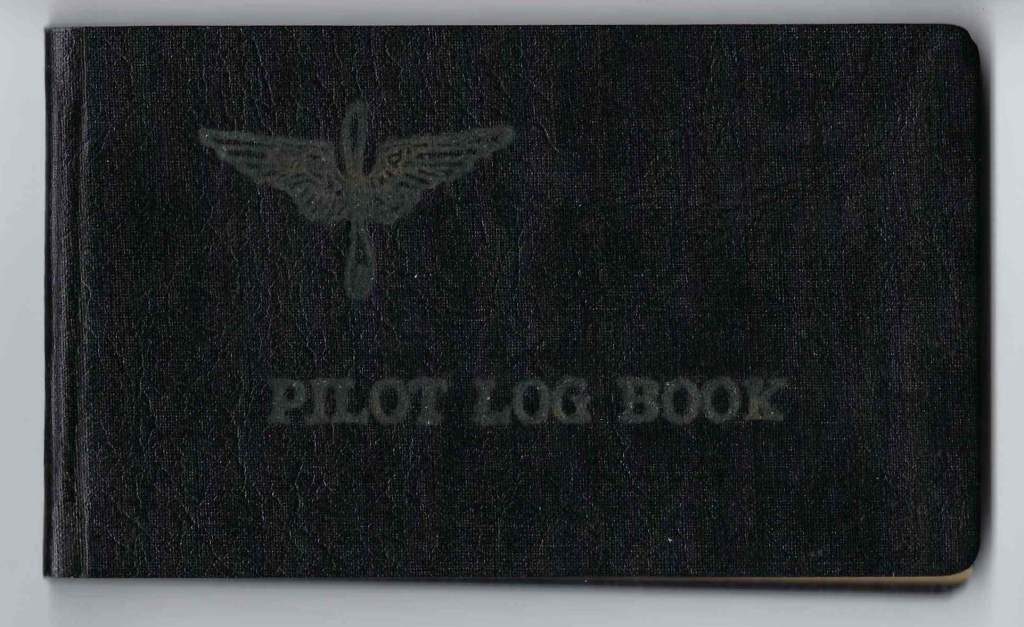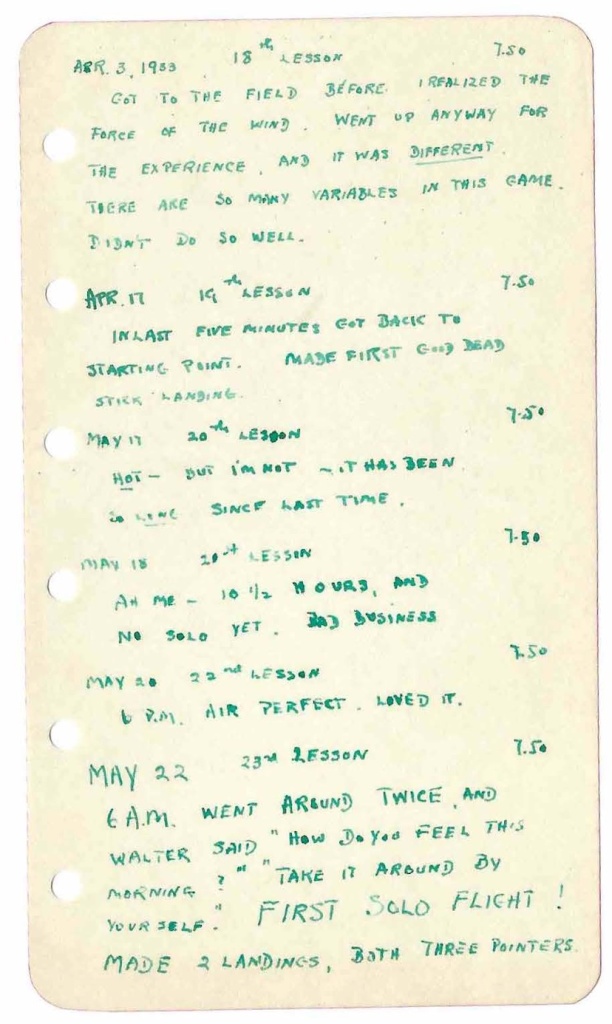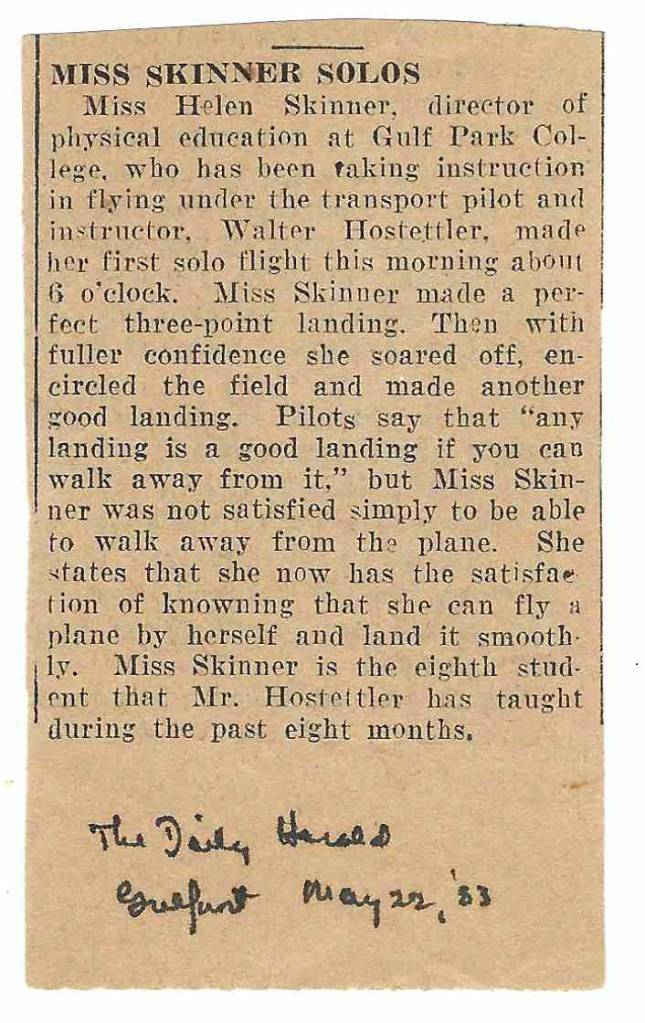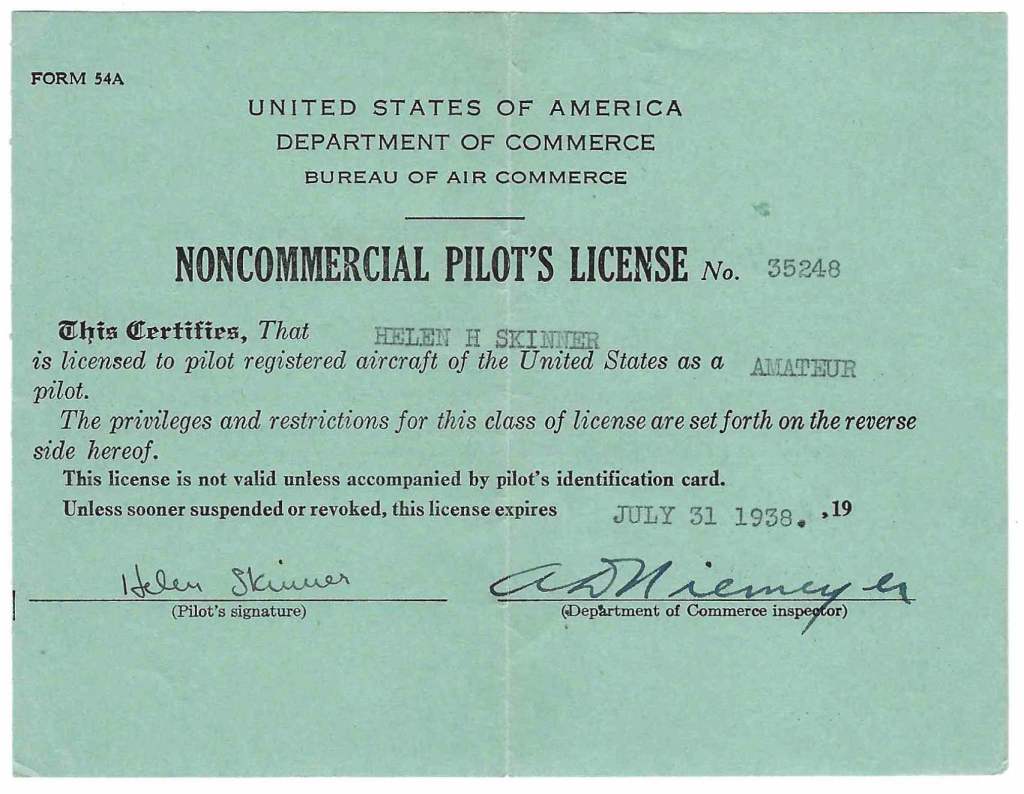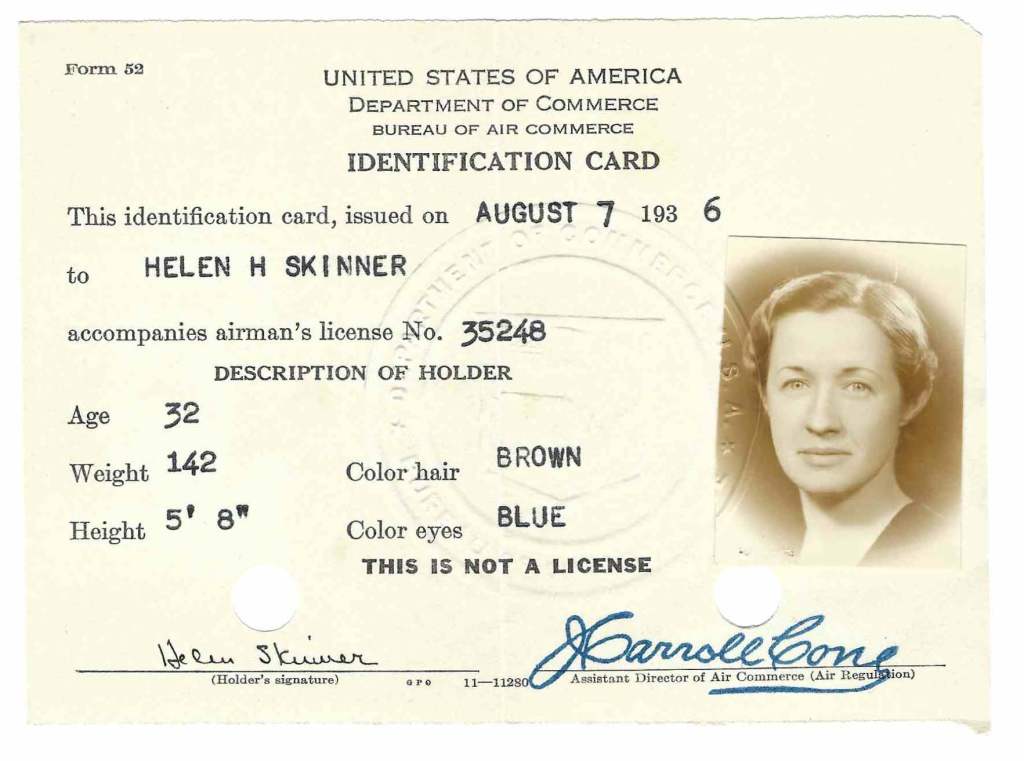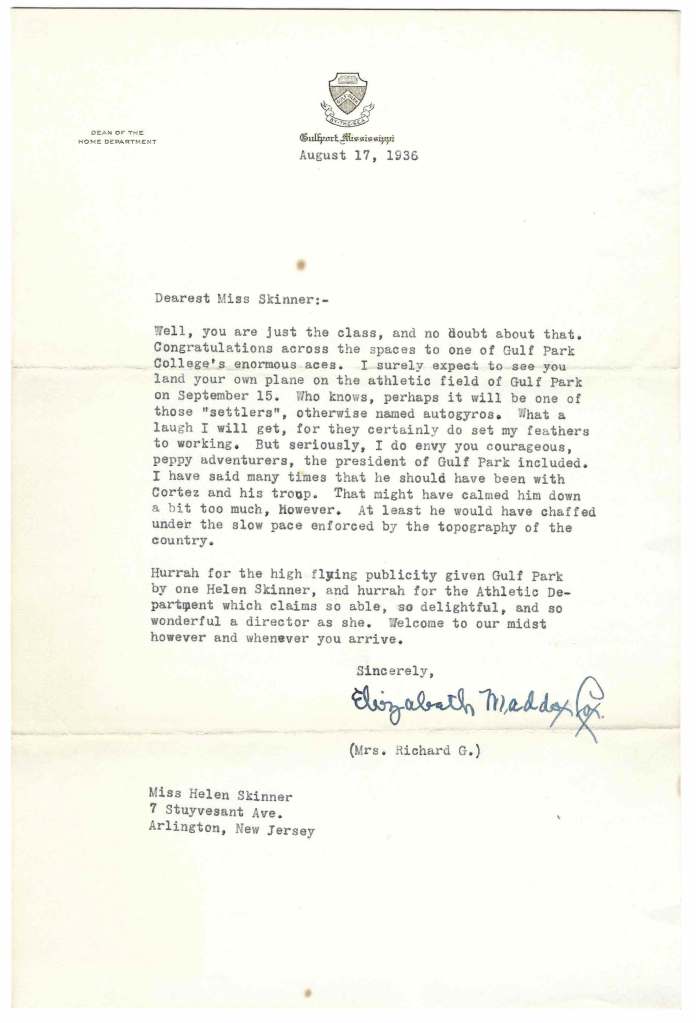A Brother in Awe
While all the booze cruising and high flying was going on, Helen received a letter from her soon to be brother-in-law, Walter J. McLaren, a 31-year-old banker from Brooklyn (specifically, we think, Bedford Stuyvesant). Walt is about to marry Helen’s baby sister, Mary (my grandmother and namesake), who was 24 and had recently graduated from Skidmore College with a degree in Home Economics. Helen, like Walter, was 31.
Here are the best bits of the letter (with some commentary):
Dear Helen, I received your letter to Mary today and write to accept my appointment as junior postmaster for the Skinners. Your handwriting on the envelope made me feel quite guilty so I hastened to make amends with my future sister-in-law by acknowledging with thanks your Christmas card and your welcome into the family.
Side note: Always good to start humble, with an ‘at your service’ vibe, all the while flattering (he offers to work for them and compliments her handwriting, which is, though tiny, impeccable).
It gave me a new thrill when I realized that in addition to having a lovely wife I am going to have a sister too. I have always wanted one and I look forward to really knowing you. Mary has told me a lot about you so that I feel that my new sister is not entirely a stranger but I must admit I stand in awe of your many accomplishments. I hope you will like me and feel entirely at ease and comfortable in our home. We hope to make it a place where you can breathe freely even though your breath should be scented with the enticing musty aroma of beer.
Side note: Her CV was quite remarkable already in 1935, so he’s correct to be in awe. ‘I hope you will like me…’ is about the cutest thing ever, considering they are peers. The home Walter and Mary would make was a cozy one in New Jersey, with their soon to be children — eventually three, including my mother. And if banking didn’t work out for Walt, based on that last sentence about beer, he coulda written copy for the ad business a la Don Draper.
If my writing isn’t legible or coherent, blame it on the pen which occasionally imagines itself a syringe and discharges its ink with a startling effect. Personally I think it’s ashamed of me and belches with embarrassment.
Side note: If he wrote ads for the pen industry, he coulda easily taken down a competitor.
Now that I have done the polite thing of introducing myself in somewhat stilted style, of making my apologies, of giving my thanks and explaining my eccentric manner of writing, I am free to devote the rest of this letter to my one subject, Mary.
Side note: SO CUTE!
As I think you realized I have been in the past no better than I should have been and posed as a professional cynic. I suppose that judged by strictly Presbyterian standards I am condemned to burn in the everlasting fires of Hell but instead it seems that I am to be warmed by happiness of a true perfect love. I shall always be grateful to Mary for teaching me a new way to view life and a promise of a beautiful future.
Side note: I’m not sure what that first part means. That he was on the wrong track until he met Mary? Not sure, but before seeing this letter, I’d only known my grandparents through pictures and tales of a quiet family home, with the three quiet children and a beloved cocker spaniel, CoCo. That Walt was so emotive about his bride-to-be is excellently sweet. ‘A true perfect love…’. It just makes me want to squeeze them all. And we don’t often squeeze.
I am writing to you of these things as I feel that you will want to know and I am sure that you will understand. I also realize that if the ravings of a love blinded boy bore you a perfect defense is open to you. I don’t usually warn my victims but I feel friendly toward you. I wish you could have seen Mary at Christmas you could then understand me. Mary radiates a halo of joy and love that causes people to look at her with a soft light in their eyes. Do you believe I love her?
Side note: I do! I do! He’s so gushy, but without hyperbole, I think. He just seems straight up smitten.
I do a great deal of thinking about what our life together is going to be. I want Mary to have a full life and her own life. I do not intend to imprison her with rules and restrictions and I am afraid that I shall resent outside interference with her choice of living. You no doubt can advise me about this point as my Mary is a poor diplomat I have found. That trait seems to be characteristic of the Scotch. I think I had better close this letter and reserve something for the future. I want to repeat my invitation to make our home your home and our garage your garage. With hope for a genuine understanding, I am. Your brother, Walter

Too sweet. And bitter sweet. From what I know, they lived a happy life, raising the three children in Essex Fells, New Jersey. Walter was the Vice President of a local bank. Mary was a homemaker. I unfortunately never met her, as she passed away of heart disease at a far too young 58, and I had yet to come along. I was however named after her, including her middle name, Elizabeth). Walter I met once, if you call an adult meeting a two year old ‘meeting’. Evidence below.
What’s been told of them is that they — like the rest of us — were not timid or shy necessarily, but words were not wasted. But then in the Booze Cruise post, Helen is a social butterfly and this letter, my grandfather is being silly and emotive. So everything is topsy turvy. But in the best ways. We all have our moments.
I’m getting off track, as this is not about Helen, but you will see soon how I circle back.
Some visuals of Mary and Walter and fam to go along with all this:








The first picture, of the child in the white hat, fancy coat, and boots, is Walter. Hehe.
Then they grow up, meet, have kiddos, and then, in one of my favorite photos of all time, likely taken in the 1950s, they appear to be opening presents on Christmas morning (they look so perfectly disheveled in such a 1950s way).
Though I don’t have pictures of Helen and Mary together aside from when they were children, I found this from a letter Helen wrote in the 1980s about their relationship:
"Mary and I scarcely knew each other when we were growing up. I was away at school, or away teaching (U of Cincinnati, U of Kentucky, Smith College, U of Minnesota, Purdue, Gulf Park College (a junior college in Gulfport Miss). But from 1946 we saw each other more often. She and Walter came to Vanc and we went east and we became devoted to each other. She and Walter were very active in community affairs and were much revered and admired. In 1961 M had an open heart operation and she felt after that she was living on borrowed time. But she had eight good years after that and never stopped her activities."
Helen would outlive her baby sister by over 30 years.
III Olympics
And now a few final items I found from her teaching era, before we set sail around the world. I have framed on my wall two tickets to the 1932 Winter Olympics, in Lake Placid, New York. These were the III Olympic Winter Games, and they were the first Olympics held in the United States. The competing countries, not surprisingly, were mostly in North America and Europe. In attendance there were 17 nations, with a total of 252 athletes (21 of them women). Curling was played even! How very Upper North American.
Though the world was still suffering from a global depression, attendance was low and the games were almost cancelled, the show went on.
The top ticket (at double the price of the second one) was likely for the closing ceremonies. How fun.

Helen studied, lived, and loved athletics and I hope she enjoyed the games as much, if not more, than the did the Jai Alai game she attended in Havana a few years later.
Barometer Reader
Another item in my possession is a cool looking barometer. It resides next to our front door, and is always set as it appears below: Rain with a chance of Changeable. The mechanics inside the thing do not move on their own, but I haven’t fiddled with it to know if they might (not that me fiddling with it would help, but perhaps one of the many engineers in the family could help — and if they’re reading this then the pressure is on!).
There are two ‘hands’ to the barometer. The gold one moves around manually via the knob in the middle. The blue one is controlled internally (or would be if it worked). And what I probably once learned but had forgotten is that barometers measure atmospheric pressure, and that’s what they were used for in aviation. The webs explain it better than I can.
The little blue plane on top seems an add on. The back is engraved: Helen Skinner, Gulf Park A.A., 1933. Perhaps this was a gift after she got her pilot’s license.


May your days be forever Fair, my friends!
A Long Goodbye
The card below reads: “Dear Miss Skinner, may every hour of your trip give you joy and the fulfillment of your most roseate dreams. You deserve every cherished blessing and every supreme happiness. All of us here at Gulf Park love, admire and appreciate you. Sincerely, Elizabeth Maddox Cox.”
Roseate is a word I either forgot (most likely) or never knew. But it is my new favorite word. A nice sentiment, but Helen would certainly not need roseate colored glasses where she was going.

The note above isn’t dated, but we will be assuming that it was written from Gulf Park College to Helen before she left on her freight boat trip around the world. It would mean she was taking time off from teaching, as the trip would last five months. I am not sure if she resigned her position at the school before she left, but if she didn’t, she would right after she returned. The trip truly turned her life on its head, because afterwards, she’d never lived in the U.S. again.
So now, for reals, we’re gonna start the next chapter. Leave your roseate colored glasses behind!



